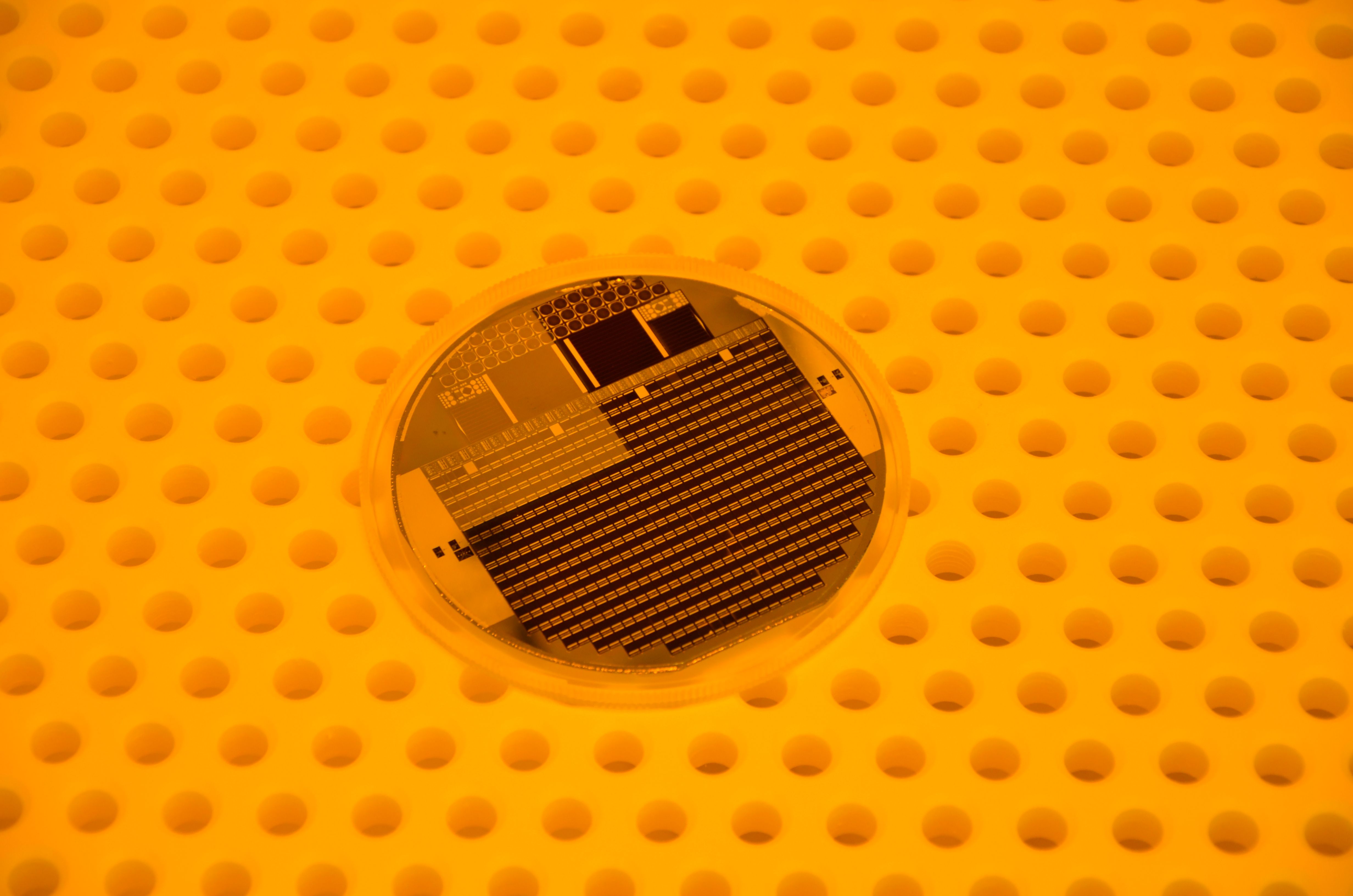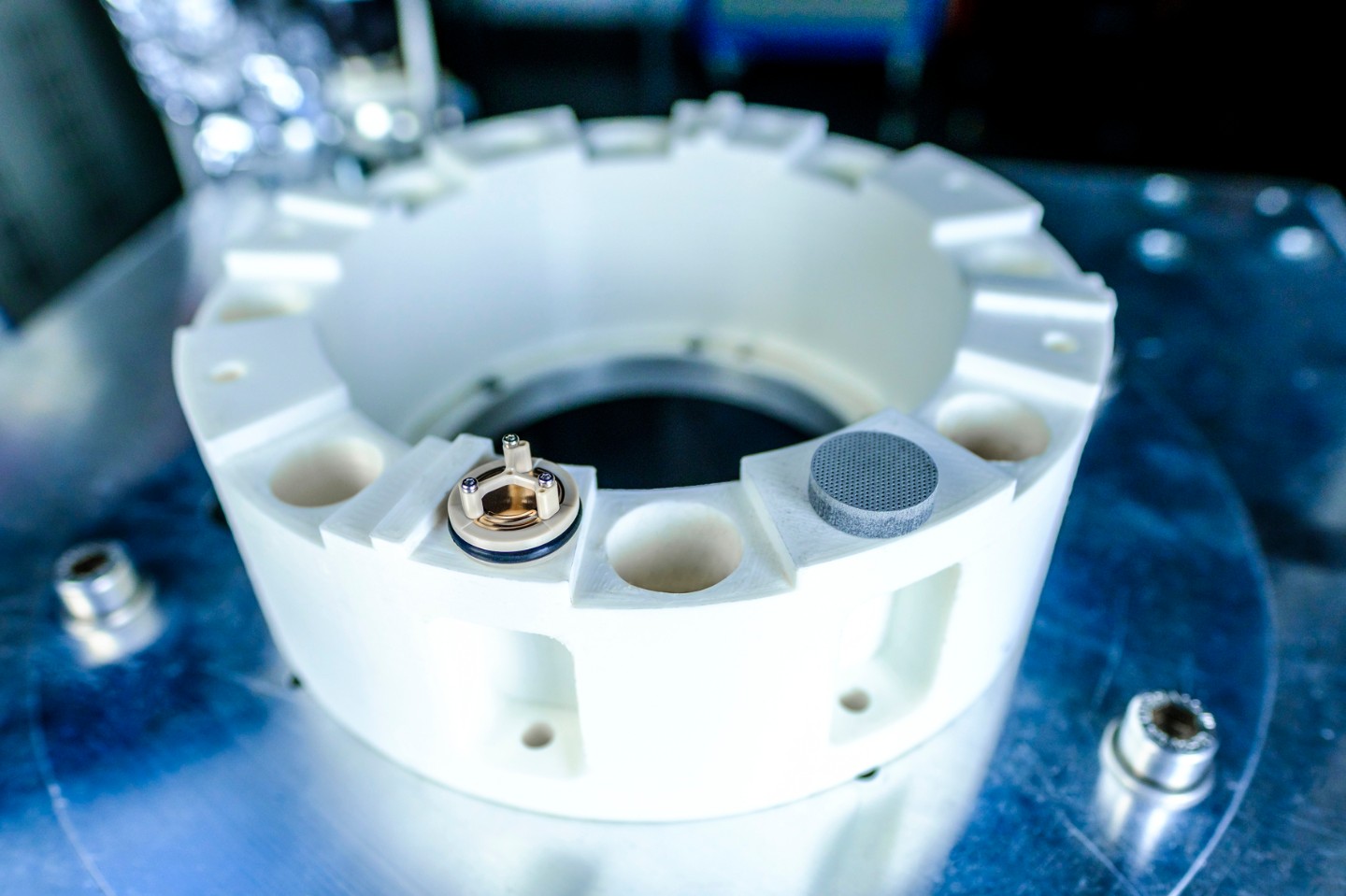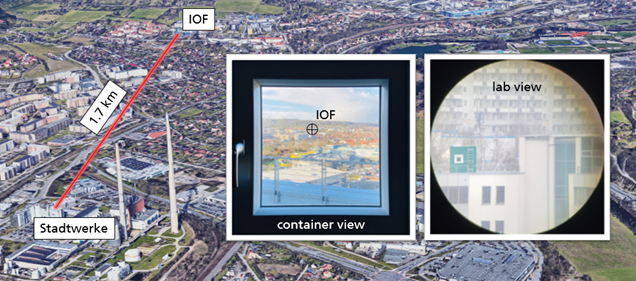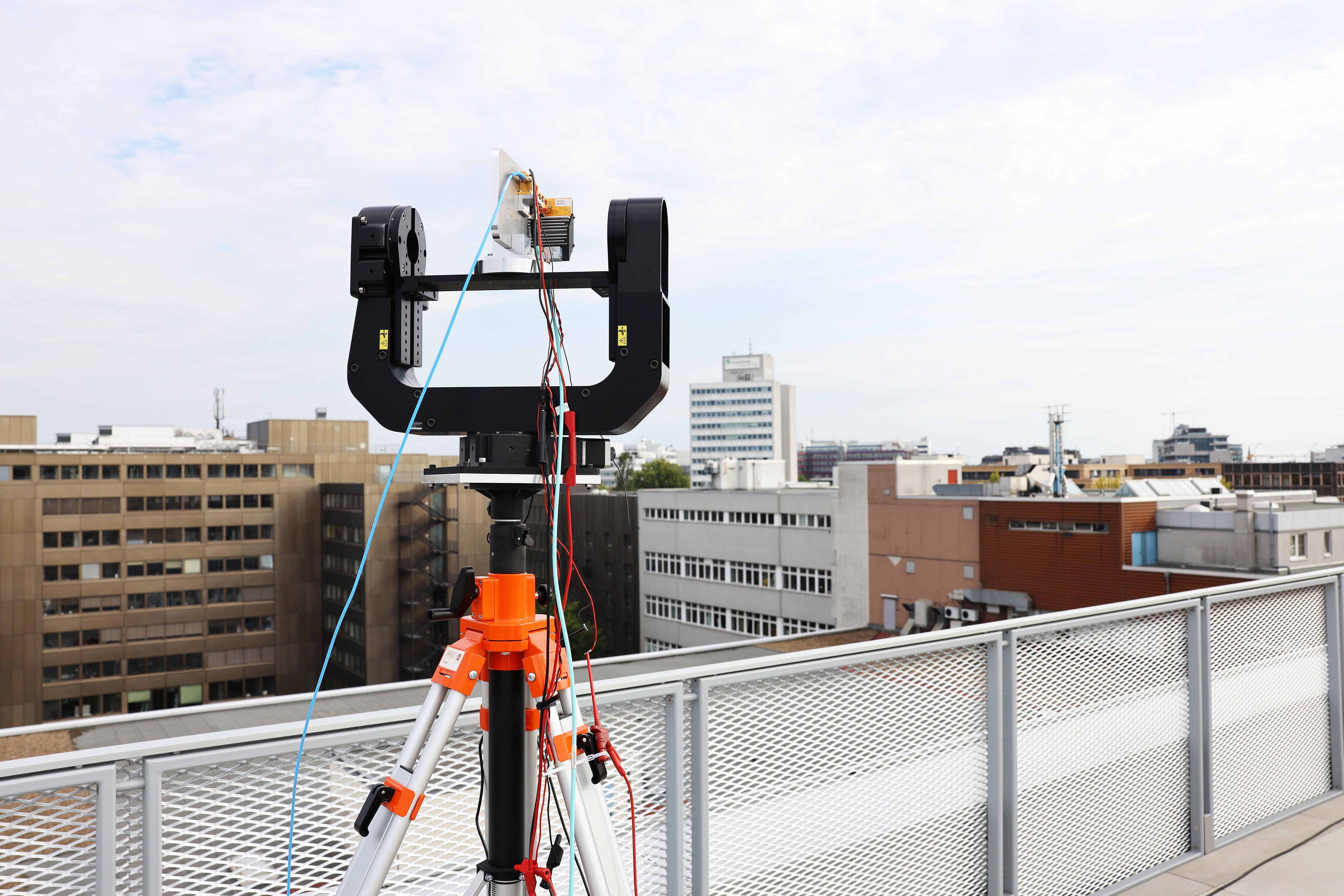World records often have a short life in the international research community. Research groups are continuously competing around the world in the advancement of knowledge. The ambitious researchers at Fraunhofer consistently achieve excellent results. Thanks to them, and additional factors, Fraunhofer institutes are among those research institutions that regularly break records. This is facilitated by the excellent technical equipment in the Fraunhofer labs and test facilities, the expertise in scaling fundamental experiments and the broad range of research disciplines where roughly 30,800 employees can quickly join forces as needed.
Fraunhofer world records in 2022
Quadruple solar cell with antireflective coating breaks efficiency records
Researchers at the Fraunhofer Institute for Solar Energy Systems ISE used a new, anti-reflective coating on the most efficient quadruple solar cell to date to increase its efficiency from 46.1 to 47.6 percent with a solar concentration ratio of 665. As it stands, it is the most efficient solar cell in the world. For two years, Fraunhofer ISE has been working on the ambitious 50Prozent project. Funded by the German Federal Ministry for Economic Affairs and Climate Action (BMWK), the project aims to develop the first solar cell with 50 percent efficiency. The experts at Fraunhofer ISE aim to use tandem photovoltaics to overcome the limitations of single solar cells, ultimately reducing solar electricity costs.
A record for magnetocaloric cooling and heating systems
There is an urgent need for energy-efficient, environmentally friendly heating and cooling systems — for refrigerators, for cooling buildings and cars during warm summers, or for heating homes with efficient heat pumps in winter, to name just a few examples. Using a thermal circulation process, the Fraunhofer Institute for Physical Measurement Techniques IPM is developing another method for pumping heat. Laboratory experiments conducted in 2022 were the first to record a power density of 12.5 watts per gram of material used with a heat pump. This means that 200 grams of material could be used to pump 2,000 watts of heat. This world record, which was published in the Nature Communications Physics journal, was made possible by combining thermal processes with the evaporation and condensation of a fluid.
Press release: »World record: power density increased in magnetocaloric cooling systems «
Lighthouse project ElKaWe - Electrocaloric heat pumps
Transferring quantum information with minimal noise

Privacy warning
With the click on the play button an external video from www.youtube.com is loaded and started. Your data is possible transferred and stored to third party. Do not start the video if you disagree. Find more about the youtube privacy statement under the following link: https://policies.google.com/privacyVideo: Fraunhofer and the Dutch research center QuTech – a collaboration of TU Delft and TNO – are joining forces in the fields of quantum communication and quantum information networks. Today they have signed a memorandum of understanding for close cooperation to pave the way for the quantum internet and to strengthen European sovereignty in the field of new quantum technologies. In the future, distributed quantum computing could be used to increase computational capacity and create entirely new applications.
Since 2019, the Fraunhofer Institute for Laser Technology ILT and the Dutch research institute QuTech have been collaborating on optical components for quantum communication and information. They developed a quantum frequency conversion (QFC) architecture that has already demonstrated record-breaking achievements: Their low noise rates and improved signal-to- noise ratio set new standards for transferring quantum information. As such, the research partners have successfully fulfilled one of the prerequisites for rapid connections between quantum computers at different locations, thus paving the way toward a stable quantum internet. Quantum frequency converters are necessary for efficiently converting the wavelengths of photons emitted by qubits to wavelengths that can be transmitted via optical fibers with particularly low loss rates and connected to other qubit systems in heterogeneous networks.
Press release »Photonic Quantum Technologies – Pioneering Impulses from the Rhenish Region«
Generating quantum keys at multiple kilobytes per second on an international level
Quantum encryption ensures communication that is absolutely secure from eavesdropping. Since 2021, a local test route has been operated between the Fraunhofer Institute for Applied Optics and Precision Engineering IOF and the Jena municipal utility company, to facilitate the study of quantum key exchanging via free beam — in other words, through the air. Thanks to its telescopes, Alice and Bob, the test route allows researchers to quickly and easily test the latest systems for quantum communication in a real environment — such as photon sources, telescope optics or special measurement systems. The scientists achieved key generation rates in the range of multiple kilobits per second. This generation rate is among the highest in the world for exchanging quantum keys via free beam within an urban area. It would be enough to ensure highly secure encryption of phone calls in a city without issue.
Press release »Te(Quantum) Whispers above the rooftops of Jena«
Demonstrating a novel approach to measuring magnetic fields
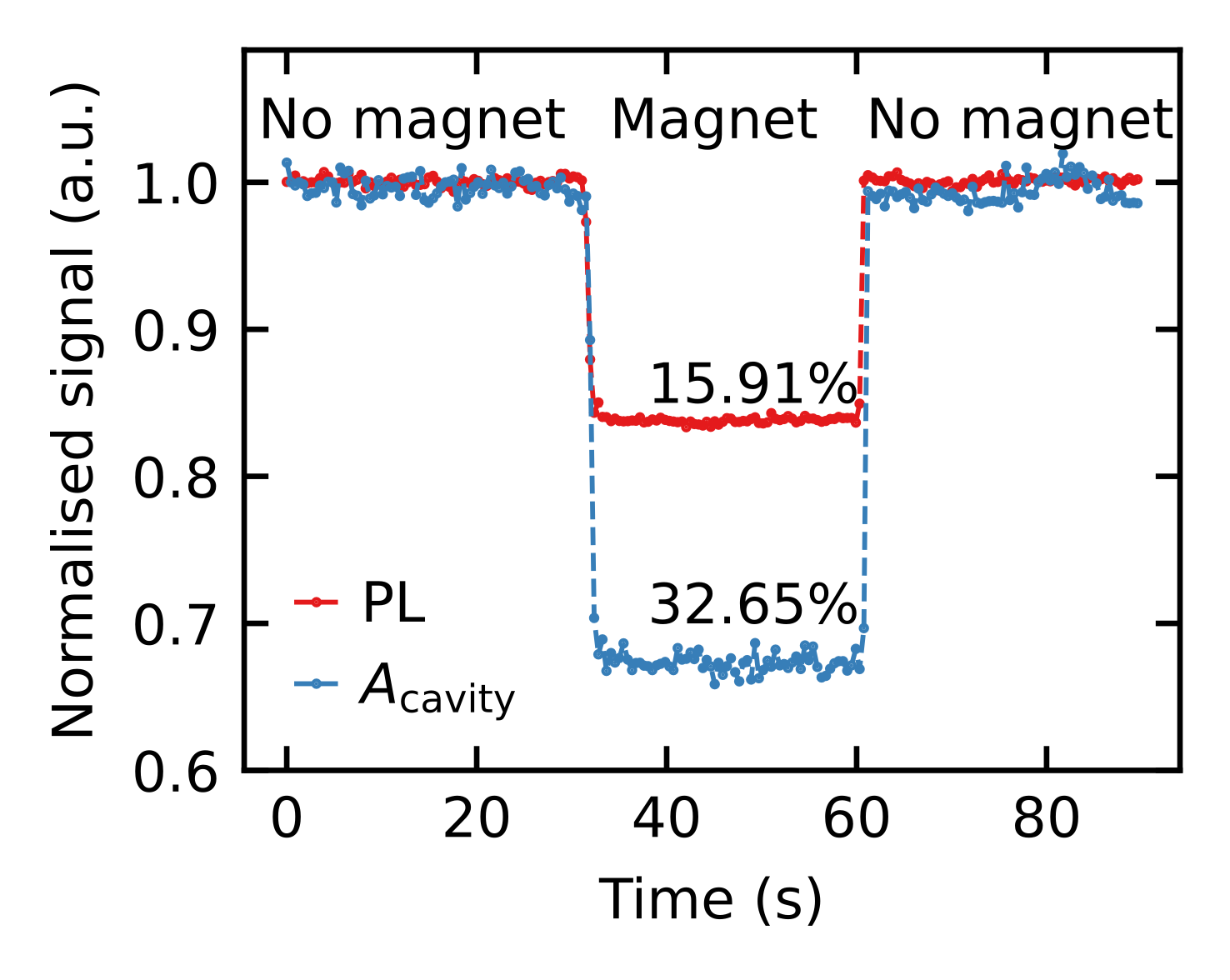
Experiments by the Fraunhofer Institute for Applied Solid State Physics IAF and an international consortium succeeded in demonstrating the theoretical principle of laser threshold magnetometry for the first time. In this groundbreaking project, diamonds with a high density of nitrogen-vacancy (NV) centers were used in a laser system, demonstrating the world’s first measurement of magnetic-field-dependent stimulated emission. Researchers also observed a physical process previously unknown in NV diamonds: the absorption of red light induced by green laser irradiation. The consortium was the first to use NV diamond as a laser medium, allowing them to successfully increase signal power and even set a new record for contrast. The magnetic field-dependent emission was found to have a contrast rate of 33 percent and a maximum output power in the milliwatt range. This only works with diamonds that have both a very high density of NV centers and good optical properties.
Press release »World's first measurement of magnetic-field-dependent stimulated emission«
Range record for future 6G mobile communications
Just like 5G, the mobile communications standard of the future, 6G, relies on a modified infrastructure to transmit high data rates in real time. Rather than macrocells, 6G requires microcells for coverage; experts currently consider the sub-terahertz spectrum (155 to 175 gigahertz) to be a likely frequency range. In this scenario, outdoor urban macrocells would be positioned only about 250 meters apart. The Fraunhofer Institute for Telecommunications, Heinrich-Hertz-Institut, HHI, the Fraunhofer Institute for Applied Solid State Physics IAF and their industry partner LG achieved a transmission distance of 100 meters for 6G sub-terahertz data during outdoor testing in August 2021. The project partners had already reached the impressive distance of 320 meters during tests conducted at Fraunhofer HHI in September 2022. By using new types of amplifiers on the transmitter and receiver, the technicians were able to more than triple the transmission difference. These new technologies, which have been integrated into LG’s latest module design, are ideally suited for future integrated circuit manufacturing — a key factor on the road to commercialization.
Press release »Fraunhofer HHI and LG Showcase Leadership in Next-Gen 6G sub-THz Band Demonstration«

